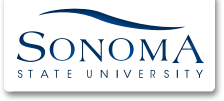Set goals for every appearance
"One of the tools I use with corporate leaders is 'OSTA': objective, strategy, tactics, and audience," says Mike Paul of MGP & Associates in New York. "Everything communicated should have an OSTA plan of attack." Plan to hammer home your key messages. For interviews, keep answers — especially for TV or radio — to about 25 to 40 seconds each. When it's appropriate, use props or visual materials to vary your pacing.
Nothing is 100% off the record
"Once notes are made, editors, publishers, and lawyers can review them," reminds TJ Walker of TJ Walker Media in New York. This goes for all appearances, not just interviews. Whatever you say — anywhere — can follow you around endlessly and perhaps disastrously. If you don't know the answer to a question, say so. Then later on, be certain to get back to the reporter with an answer.
Watch your body language
"Even in positive interview situations, interviewees sometimes look tense or stiff, which can have a big impact on credibility," says Gail Gardner of Adamson Public Relations in St. Louis. Before on-camera interviews, if there is time, do some exercises or walk around to relax your body.
Stay on track with your message
"Reporters usually can only use what you say against you," says Margo Mateas at the Public Relations Training Company in San Jose, Calif. "If the interview goes off track, stop it." You can ask for a break, a glass of water, a visit to the restroom. "It doesn't matter if the excuse seems lame — they will use footage of you on-camera, not off," she says.
Learn how to "bridge"
This technique allows you to deflect any attempts to derail your message. "Bridging" creates a transition so that you can move from one subject to the message you want to communicate. First answer the direct question, then transition to your message. Atlanta media trainer Debbie Wetherhead suggests such bridging phrases as:
- "Before we get off that topic, let me just add..."
- "Let me put that in perspective."
- "It's important to remember that..."
- I don't think I can answer that, but let me tell you three things..."
Have a take-away available
Always plan the points or facts you want the reporter and, by extension, the audience to walk away thinking about. You might identify these points as the building blocks of your presentation. If someone else prepares your material, discuss the take-away points first. "Narrow the focus," says Philadelphia trainer and former TV news reporter Karen Friedman. Then, to get listeners to remember you, "deliver those points passionately and succinctly through analogies and re-creating experiences."
Finally, it's not over when it's over. Make sure to track the results and get reviews of your performance. Ask pals and peers how well your message went over. Be smart and brave enough to make the necessary improvements, so you do even better next time.

